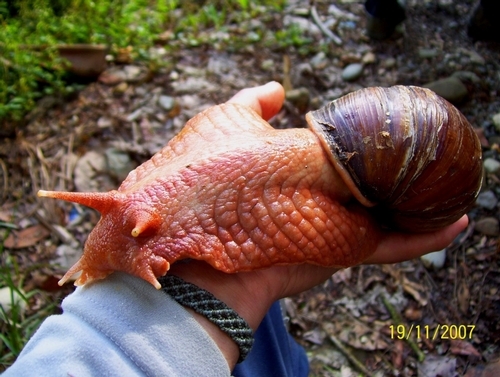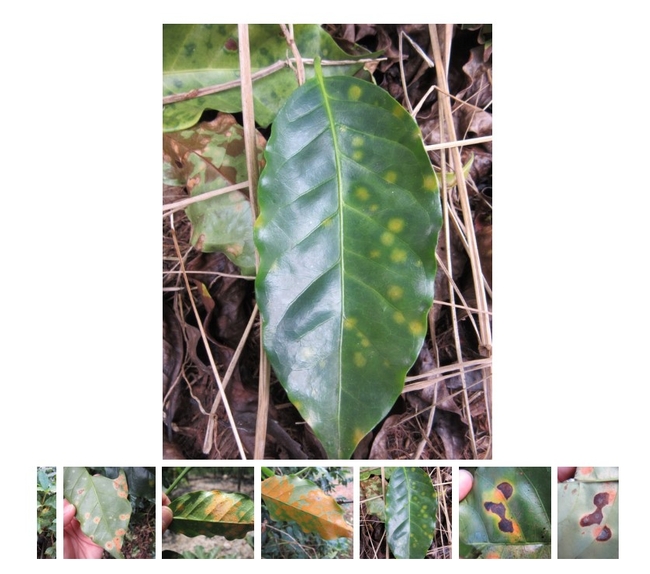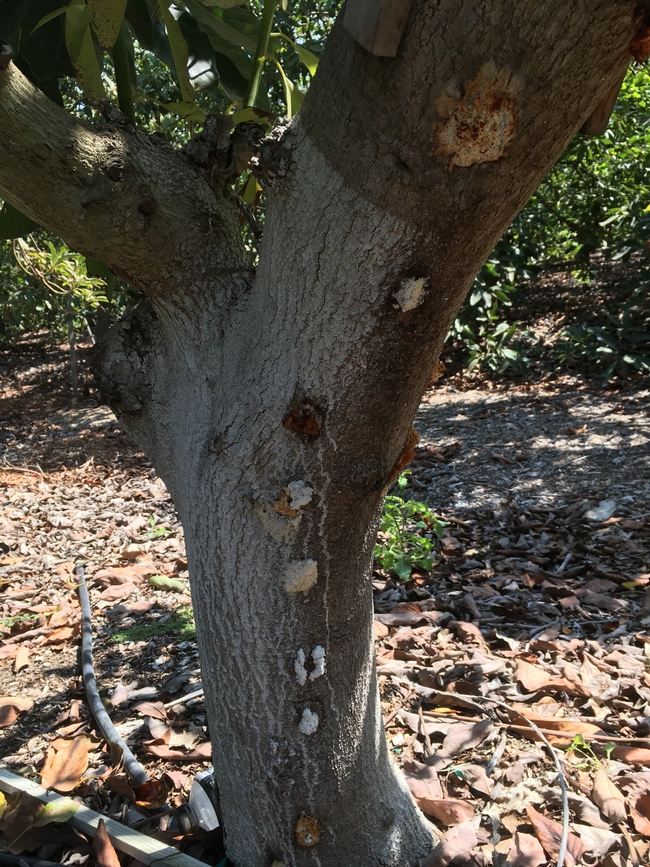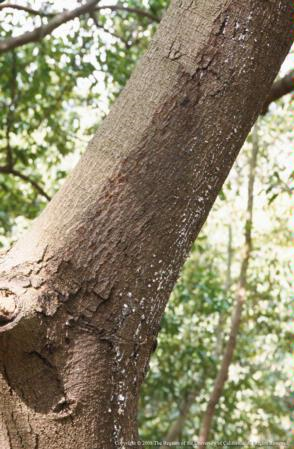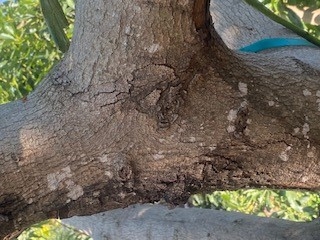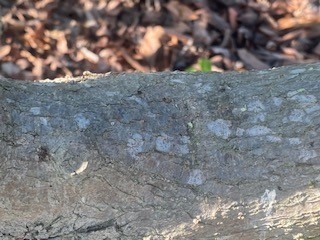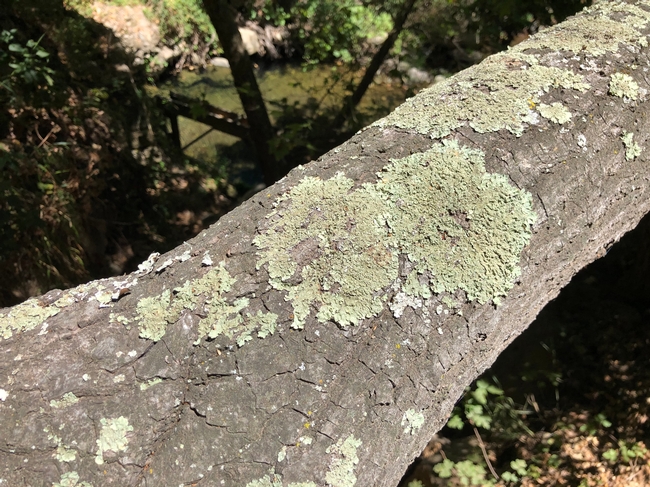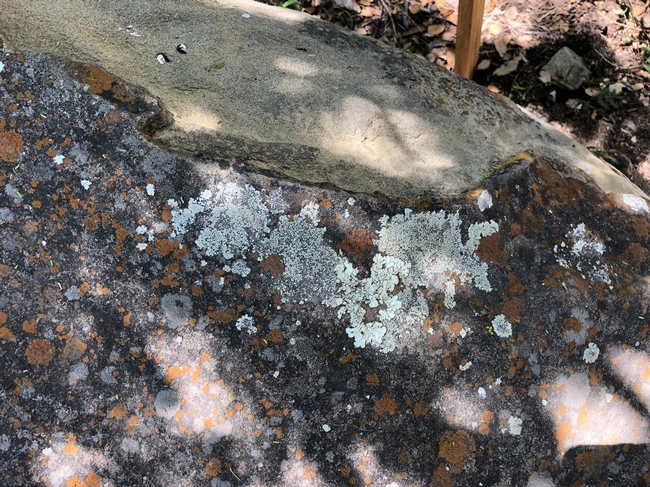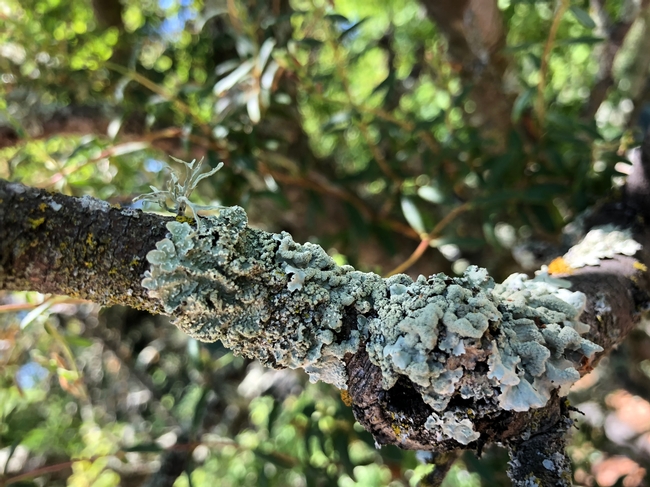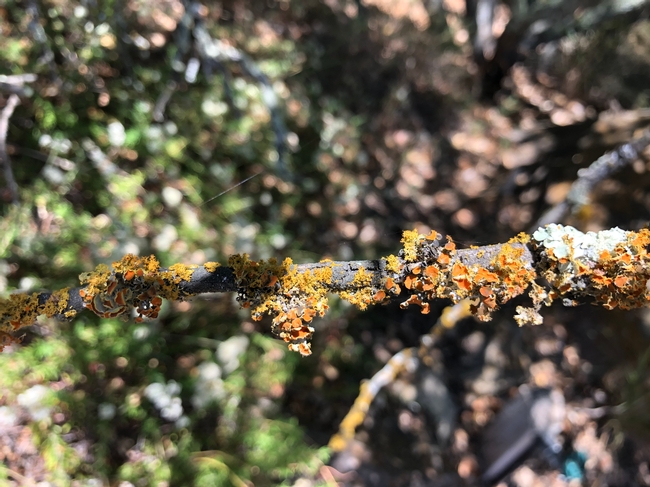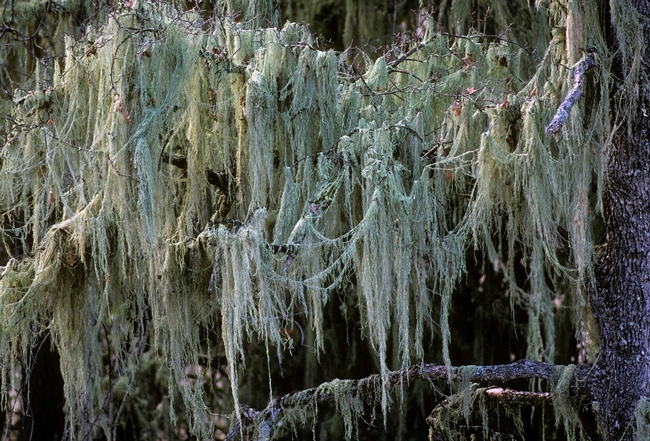- Author: Ben Faber
In many ways our pest and disease management of fruit tree crops are exacerbated by our cultural practices. Avocado and citrus offer some very clear demonstrations of how we manage our trees can lead to reduced pesticide use. From the beginning, our selection of rootstock and scion can help lessen pest and disease problems. In both avocado and citrus we have good rootstocks which can handle problems, such as root rot more effectively than seedling rootstocks. So it is imperative that if you know that drainage will be a problem, starting off with the right, healthy rootstock helps. Also scion selection can have a major impact, as well. For example, ‘Lamb' avocado is much less prone to persea mite than is ‘Hass'. This pest can significantly impact a spray program and planting ‘Lamb' could mean virtually no sprays for this pest. Selling the ‘Lamb' fruit is then the challenge There are similar examples in citrus where one variety is more prone to a pest or disease than another.
Irrigation is probably the most important cultural factor in managing tree disease. Over, under and improperly timed irrigations are the conditions necessary for many root diseases. The Phytophthora spp. fungi are looking for distressed root systems brought on by waterlogging and other stressful situations. Other conditions, such as wetted trunks can also bring on some trunk diseases, like gummosis in citrus and crown rot in avocado. Simply preventing irrigation water on the trunks can limit these diseases. Other diseases, such as black streak, stem blight and bacterial canker in avocado are bought on by soil moisture stress.
Nutrients, especially nitrogen management, has been long known to affect levels of insects, such as scale, mealy bug and aphid. Encouraging lush growth helps sustain these insects, so reducing this growth tends to lower their numbers. Managing when canopy growth occurs can affect pest severity. Avocado thrips build their populations in the spring and moves easily from leaf to fruit causing significant scarring. By promoting leaf growth at flowering time with a nitrogen application, keeps the insect on the leaves and reduces fruit scarring. This also promotes growth that replaces leaves that have been damaged by persea mite. Likewise the incidence of citrus leaf miner damage can be reduced if spring pruning is avoided so that a flush of growth does not occur at the same time as the population is building. Timing of pruning is important in lemons to avoid wet periods of rain and fog to reduce the spread of hyphoderma wood rot fungus when its fruiting bodies are active.
Pruning can change pest pressure by changing the humidity in the canopy, introducing light and changing the climate supporting disease and pests. By making spray coverage more thorough, it also makes for a more effective application. Modified skirt pruning can have significant effects on mealy bug and scale control, fuller rose weevil incidence, ant colonization and snail damage. It's important that the trunk be protected as an avenue of movement for snail and ant control to get the best effects of this pruning. Skirt pruning also reduces problems with such weeds as bladder pod and the ladder effect of brown rot in citrus – fungal propagules splashed from the ground onto low-hanging fruit, which in turn is splashed to higher fruit.
Keeping a canopy clean of dust and fire ash also makes for more efficient biological control. Because predators are slowed in their search, they are less efficient. They also spend more time grooming their sensory organs, and this also slows them down. Parasites such as wasps are actually slowed by the physical abrasion to their tarsi. Dust also creates a drier environment, which is more hospitable to our pest mites. Watering picking rows, roads and even the trees themselves can lessen mite populations. Use of cover crops can also reduce dust and potentially provide pollen and nectar for predators and parasites. Of course cover crops create a whole new set of management issues, such as colder winter orchards and snails.
Finally harvest timing to avoid pest and disease is often overlooked. In avocado, fruit is often set in clusters. Greenhouse thrips love the microclimate created, and if in a size-pick the cluster is reduced, greenhouse thrips will often not be a problem. Harvest timing is also important in citrus. Fruit left too long on the tree can often develop septoria fungal spot. Picking in a timely manner reduces the incidence of this disease.
These are just a few examples of how cultural practices at the right time can reduce pest and disease problems.

- Author: Ben Faber
Coffee Leaf Rust (Hemileia vastatrix) has recently been found in Hawaii.
This is a devastating fungal disease that has been found in most coffee growing areas of the world. It arose in Africa and moved to the Americas, now it is completing the circle, showing up in Hawaii. Coffee is the obligate host of this disease, meaning it only can reproduce on coffee. It needs coffee to survive and it needs to come into contact with another coffee plant for it to spread. It's most likely spread by humans moving infected coffee plant parts around – infected seed or the actual plants. It has caused turmoil in those countries where it has showed up, requiring frequent fungicidal sprays for its control. There is no cure for it at the moment, although farms have managed by planting more resistant varieties. There is no true resistance yet, however.
There is a small, but profitable growing coffee agriculture in California.
It hopefully can be protected from this disease. It really is dependent on travelers being aware of where they have been and what they carry with them. WE are our own worst enemies.
A recent alert has been posted by the University of Hawaii
Dear Growers and Friends,
Suspected coffee leaf rust has been reported on Maui.
Currently, HDOA is working to get a positive identification of this disease.
Growers, please scout your farms for any symptoms of coffee leaf rust. Here are my website and a poster that provides information and images of the disease on coffee trees.
If you suspect coffee leaf rust on any island, you can call HDOA's Plant Pest Control Branch at (808) 973-9525.
If you have questions about rust, you are also welcome to contact me at andreak@hawaii.edu. You can also text me at (415) 604-1511.
The HDOA memo can be found here.
A recent Atlantic article describes the disease and its impacts
- Author: Ben Faber
Not everything you see on a tree's bark is disease, although that's usually the first thought of a plant pathologist. Below are bacterial canker and black streak which are both significant problems in some California avocado orchards. Their cause is normally an issue of water/salt management.
But sometimes these patches are innocuous. In a recent farm call, and the “thing” on the bark was a hybrid organism called a lichen. This is a classic odd ball of nature. It consists of a blue-green algae called a cyanobacteria – photosynthetic single cells making sugar – and a fungus that serves to protect the algae from the elements. The fungus is farming the algae, in a way. Neither, though, does well on its own. In fact, it's been difficult to recreate the lichen relationship in the lab, starting with the separate, independent partners.
These are tough “beasts” surviving on most continents, in some very harsh environments. When the going gets rough, they just close up on themselves and survive until the right moisture conditions occur. And, within an hour they can spring forth full of color. The rest of the time, they might just hang on a rock.
Some of the algae also fix nitrogen from the air, so lichen really are self-sustaining. They just need somewhere to grow, a tree, a rock, a roof. They take amazing shapes and colors and they are also known for producing some interesting toxins that could be used as medicines.
These life forms have been studied for over 150 years and have been recognized as kind of the standard for a "mutualism", a symbiosis where the two participants benefit from each other. Only in the last few years has it been recognized that there is often a third component to this symbiosis - various yeasts that are the likely producers of the toxins. Toxic for some life forms like other bacteria, algae or animals, but not others. For some animals, lichens can be an important food source, such as for caribou, reindeer and musk ox. Animals and lichen that are all growing in a harsh climate.
The California state lichen is Spanish Moss or Lace Lichen, neither moss nor lace nor Spanish, but Ramalina menziesii. It is not to be confused with that other Spanish Moss found around the world, in the genus Usnea. It's all worth reading about, because it can get so confusing
- Author: Ben Faber
Anthracnose, Sunblotch, and Armillaria Root Rot
Avocado Trunk Canker and Collar Rot
Avocado Branch Canker (Botryosphaeria)
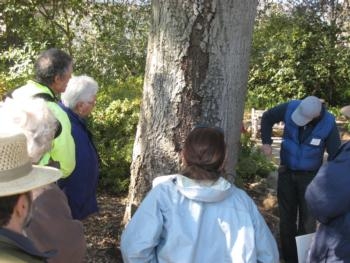
- Author: Ben Faber
Snails and Slugs (May 22, 2019 from 3-4pm)
Presenters: (!) Dr. Cheryl Wilen (UC IPM), (2) Dr. Rory Mc Donnell and (3) Dr. Dee Denver (Oregon State University), (4) Dr. Adler Dillman and (5) Dr. Irma De Ley (UC Riverside). The webinar will cover an overview of snail and slug biology, damage and management with emphasis on brown snail and Italian white snail, and current research on slug biocontrol using nematodes. One DPR CE unit (other) and one CCA CE unit (IPM) are approved.
And What Else Are the
UC Ag Experts
Talking About? 

| Event Name | Date |
|---|---|
| UC Ag Experts Talk: Snails and slugs | 5/22/2019 |
| Uc Ag Experts Talk: Management of Weeds in Citrus Orchards | 6/19/2019 |
| UC Ag Experts Talk: Citrus Dry Root Rot | 7/24/2019 |
What is involved in the webinars?
A series of 1 hour webinars, designed for growers and Pest Control Advisors, will highlight various pest management and horticultural topics for citrus and avocados. During each session, a UC Expert on the subject will make a presentation and entertain write-in questions via chat during and/or after the presentation. As we develop this program, we may expand to other crops.
Topics: pests and diseases of citrus, avocado and other crops
And Next up is:
Management of Weeds in Citrus Orchards (June 19, 2019 from 3-4pm)
Dr. Travis Bean, assistant weed science specialist in UCCE, will discuss the importance of weed management in citrus, tree age and variety considerations, scouting and weed identification, cultural and mechanical practices, and pre- and post-emergence herbicides. One DPR CE unit (other) and one CCA CE unit (IPM) are pending.
Register in advance for the webinars by clicking on the event links above.
Are there Continuing Education units?
When the subject discusses pest or disease management, continuing education units will be requested from DPR (1 unit per session). Participants will pre-register, participate in the webinar and be awarded the unit. The sessions will be recorded and hosted on this web site for future study. However, continuing education units will be awarded only to the participants who attend the live version of the webinar.
Who is involved?
This webinar series is brought to you by Ben Faber (UC ANR Ventura Advisor) and Dr. Beth Grafton-Cardwell (Depart of Entomology UC Riverside Extension Specialist) with the technical support of Petr Kosina (UC IPM Contect Development Supervisor) and Cheryl Reynolds (UC IPM Interactive Learning Developer).
